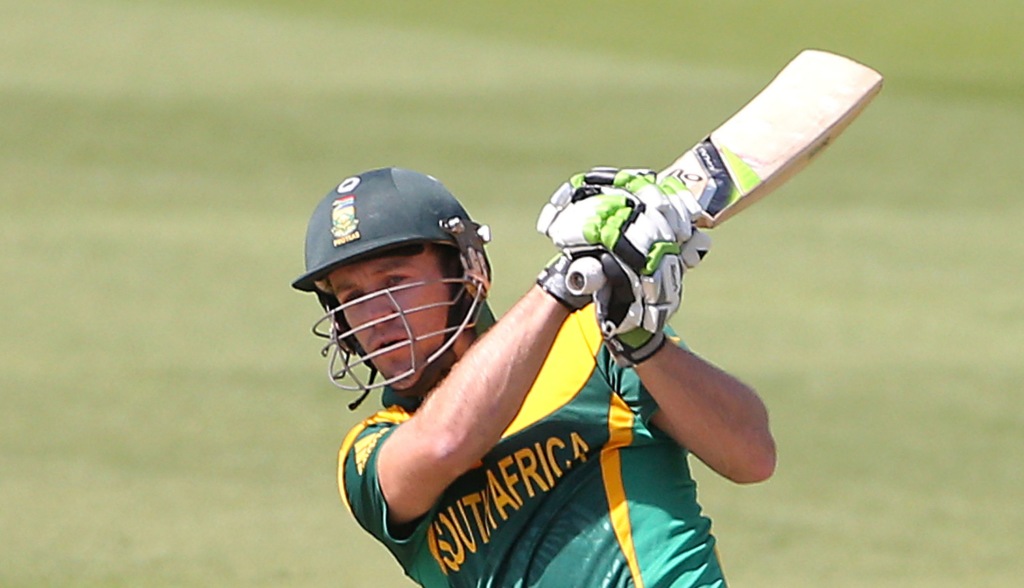The Proteas will prevail in the play-offs if AB de Villiers, Hashim Amla, and Faf du Plessis all hold their nerve.
The moment of truth has arrived. South Africa will play Sri Lanka on Wednesday, and it’s in this match where the Proteas will have a chance to show how much they’ve learned since 2011.
So much is riding on this one game. The pressure is immense, given that the winners will advance to the World Cup semi-finals and the losers will catch the next plane out of Sydney. Without question, there is more pressure on the Proteas, who have not won a World Cup play-off in 23 years of trying.
Some will argue that a statistical analysis is pointless, and it will all come down to how those 11 South Africans perform on the day. While this is true to a point, there are some stats that will give the Proteas confidence ahead of their biggest ODI clash since the 2011 World Cup quarter-final in Dhaka.
There are unfortunately more stats that warrant concern. The odds are against the Proteas winning their quarter-final in Sydney this Wednesday, especially if they lose the toss and are forced to chase a target.
For starters, the collective performances at the 2015 World Cup have been anything but encouraging. They’ve won four matches when they’ve batted first, and lost two when batting second.
The bowling has been erratic, with a lot of criticism aimed at South Africa’s fifth option. This is not really surprising given the weak performances by the Proteas’ bowling unit in the buildup to the World Cup.
No, the biggest disappointment thus far has been the batting. The top six or seven batsmen were expected to carry the Proteas through this tournament. Unfortunately, apart from a handful of good individual showings, South Africa have underperformed with the bat.
South Africa should hope that AB de Villiers wins the toss on Wednesday. The Proteas captain will elect to bat and make use of the good batting conditions at the SCG. When the Proteas have batted first at this tournament, the top seven have averaged 373 runs. Apart from Quinton de Kock, every batsman used in positions one to seven have made a big contribution at some stage.
Hashim Amla has averaged 61.75 in the World Cup matches where South Africa have batted first. Faf du Plessis’s average contribution is 65, and De Villiers’s a whopping 103.33.
The averages of Rilee Rossouw (82.50), David Miller (126.50), and JP Duminy (138) are boosted by not outs and the fact that Rossouw and Duminy didn’t play in all the group matches. Nevertheless, they do serve to indicate how dominant the South African batsmen have been across the board. Even the much maligned Farhaan Behardien has scored 74 runs in two innings (when South Africa have batted first).
However, when one looks at the two matches in which South Africa batted second, the averages of these batsmen drop steeply. The Proteas’ top seven contributed 159 runs in the game against India, and 160 against Pakistan. Individually, four of those seven averaged less than 12 runs in those matches, namely Miller (11), Duminy (9), Rossouw (6), and De Kock (3.5).
Perhaps it’s unfair to judge these players on their performances against India and Pakistan. And yet, when one examines the careers of these players more closely, it’s evident that that they are far more comfortable when South Africa are setting a target.
All six of De Kock’s centuries have been scored when South Africa have batted first. When the pressure has been off, the youngster has averaged 51.65. When he’s been asked to chase, De Kock has averaged 19.50, surpassing 50 on just one occasion.
Maybe I’m being too hard on the youngster. But how about the more experienced men in the middle order? Miller’s numbers are just as one-sided.
Miller averages just 18.50 in the second dig. That 65 he cracked against Australia in Australia last November is the only time he’s scored more than 24.
Duminy has been a more consistent contributor with an average of 32.85 in the second innings, compared to 44.60 in the first. However, the stats confirm that he is more likely to play the big knock when South Africa set the target. He’s scored all four of his centuries, and 14 of his 20 50s, in the first innings.
Proteas fans will hope that these players buck the trend on Wednesday. They should also hope that the best of the South African batsmen, namely Amla, De Villiers, and Du Plessis, continue to contribute in a chasing effort.
Of the three, De Villiers has been the best at this World Cup. The Proteas captain was run out for 30 against India, but fought valiantly for that 77 against Pakistan. His career stats also confirm that he is a key man when the Proteas bat second.
In fact, De Villiers averages more in the second innings of a ODI match (57.03 compared to 50.46). He’s scored over 3,500 runs, four centuries, and 25 50s when chasing down a total.
We should expect De Villiers to receive due support from Amla and Du Plessis. Amla clearly prefers it when South Africa bat first, as he’s scored 16 of his 20 tons at an average of 63.26. That said, an average of 45.17 in the second innings is nothing to sneer at.
Like De Villiers, Du Plessis actually averages more in the second innings (38.96 compared to 33.31). It will also give Du Plessis and South Africa confidence to note that the No 3 cracked two second innings centuries against Australia in Harare last year.
This trio represents the best chance of a win the quarter-final. Whether South Africa bat first or second, they will rely heavily on Amla, De Villiers, and Du Plessis to get them over the line.





